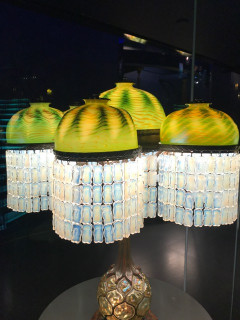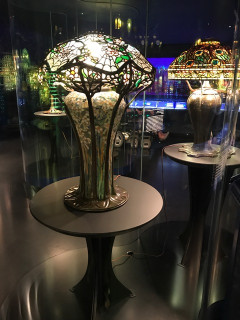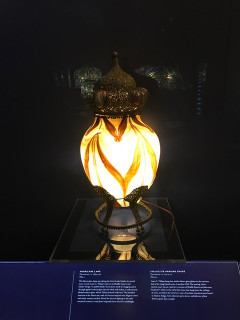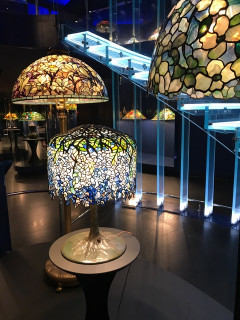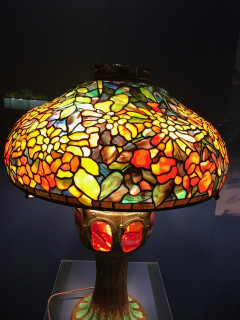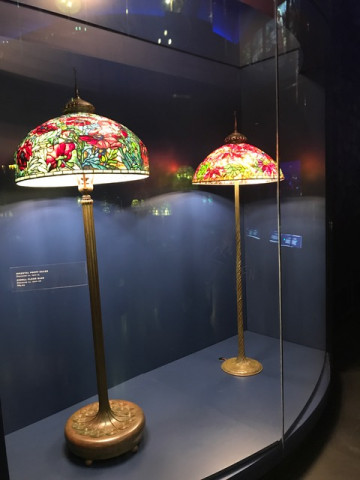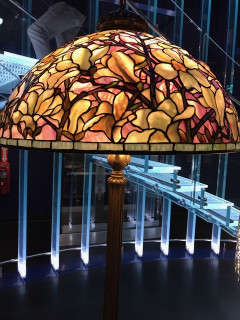The Splendor of Tiffany Lamps
A highlight of any trip to New York is a visit to the New-York Historical Society, the home of 132 Tiffany lamps. It is the largest such collection in the world.
These intricately designed lamps created in the late 19th and early 20th centuries are identified with the Art Nouveau movement known for the use of modern materials, including iron, glass and ceramics.
Art Nouveau artworks were inspired by natural forms such as plants, flowers and leaves winding their way through lamps and other pieces. These elements are found in abundance in Tiffany's designs.
Louis C. Tiffany founded his company and was the creative impetus for the use of stained glass in his lamps, windows and luxury objects. But more recently, Clara Driscoll, head of the company's Women's Glass Cutting Department, has been credited as the designer of many of the firm's leaded glass shades.
Driscoll and her staff, called the "Tiffany Girls," labored in anonymity. Art historians credit Driscoll as the designer of Tiffany's signature Dragonfly lampshade.
The lamps were made in Tiffany's own factory in Corona, Queens, across the river from Manhattan. There chemists experimented with new glass recipes and sheet and blown glass to create a vast variety of colors and textures. Male workers cut the glass into the correct shapes and carefully inserted them into the designs created by the "Tiffany Girls."
Tiffany lamps and stained glass windows can be found in many museums, including The Morse Museum in Winter Park, FL, which claims to have the most comprehensive collection of works by Tiffany, including jewelry, pottery, paintings, art glass, leaded-glass lamps and windows.
It also houses the chapel interior from the 1893 World's Columbian Exposition in Chicago. Winter Park is about a two-hour drive from Sarasota if you'd like to see these gorgeous pieces of art in person.
